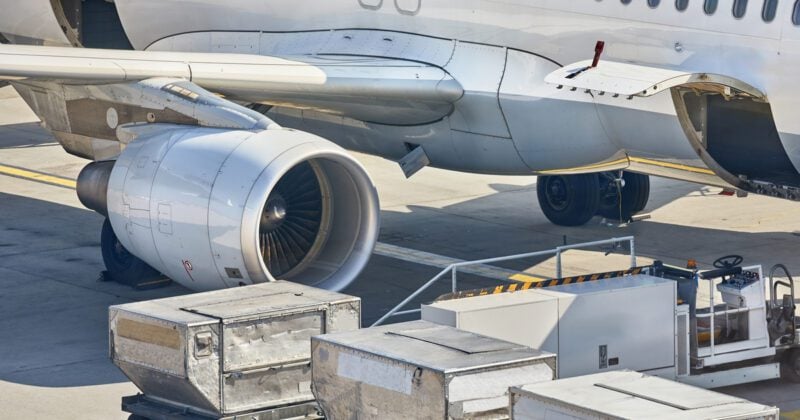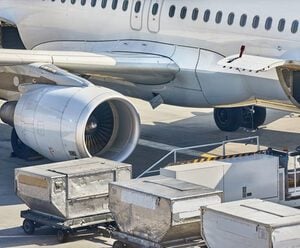目前,全球航空货运受到两大因素干扰――分别影响了运力供应和需求,或者至少是货物可得性受到扰乱。
首先,俄罗斯入侵乌克兰导致空域受到限制和封闭,促使多家承运商由于成本上涨取消了对亚洲的空运服务。在大多数贸易航线中,因为各国对俄制裁,也实际上将俄罗斯货运机队排除在外。其累积效果是降低了全球货运能力。
第二个市场干扰因素自然是中国各地持续采取的新冠疫情封控措施。这些措施影响了机场的运作,尤其是上海,也包括中国其他地方。即使在承运商仍在运营的地方,货车运输服务、仓库和工厂的关闭也阻碍了货物的装载。“上海周边城市病例数量不断增加,有可能导致封锁延长到今年5月,”《4月DHL航空货运市场最新消息》指出。
在第二季度,“由于香港最近爆发新冠肺炎疫情”,DHL香港空运贸易领先指数(DTI)在进出口两方面都急剧下跌。奥密克戎爆发期间,生产中断导致当地一半以上的航空贸易商称出货发生延迟而且出货量有所减少。
“上海浦东机场(PVG)的情况仍然非常困难,对其他机场的溢出效应现在更加明显了,”DHL全球货运亚太区首席执行官Kelvin Leung说道。
然而,中国境外的基本需求仍未减少,很多经济指标――包括超过50的全球采购经理人指数(PMI)――表明中期前景仍是积极的。
“我们预计5月的上半个月内很可能继续封锁,而一旦解封――随着夏季的临近,这个可能性越来越大——那么工厂和出口市场就会很快恢复运转。
“很多迹象表明目前仍有需求未被满足,因此很可能存在积压订单,我们建议客户及早预订舱位,”Leung说道。
即使由于需求量较低而有所下降,但运价仍维持在高位
由于4月中国出口货物的减少,尽管俄乌战争导致运力下降,但在东西方之间的贸易路线上,反映海运即期运价的航空货运运价仍然失去了上涨的势头。
然而,即使中国境外的运价相比2021年末的高峰期显著下跌,但仍然维持在高位而且波动很大。根据《4月DHL航空货运市场最新消息》,2022年4月燃油价格上涨至每桶152美元,更是印证了这一情况。
这份最新消息还提到,与2019年相比,2022年2月全球运价上涨了105%,即翻了不止一倍。由于油价上涨、运力减少和战争带来的额外费用,预计运价在可预见的未来将维持在高位。而且,俄乌战争造成的航线变动将进一步影响服务安排,因此预计运输时间会变长。
“欧洲主要机场的劳动力短缺等其他市场因素进一步影响了运输时间,”Leung补充道。“根据这些最新动态,在运输计划中增加缓冲时间是较为谨慎的做法。”
航空货运运力面临更大压力
Stifel公司全球物流和未来交通公平研究主任兼首席分析师Bruce Chan认为,发生在乌克兰的武装冲突将导致运力受限,从而给近期的航空货运定价带来上行压力。
“疫情反复等其他事件和动态可能会暂时抑制近期需求,但随着中国恢复生产和经营,最终会引起波动,”他在提交给波罗的海交易所的报告中提到。
“主要消费国爆发新一轮疫情还可能会导致运价和运力进一步震荡。”
Chan说道,虽然过去几年内发生的事件表明,尽可能多角度考虑问题是一种明智的做法,但他认为人们必须记住,尽管市场中发生了小幅震荡,但目前的市场状况是由灾难性的全球事件――新冠肺炎疫情――导致的,可能需要同样急剧的需求转变才能使市场恢复疫情爆发前的水平。
“我们可以谈论数据随时间的变化以及各月、各周和各年之间的变化,”他补充道。“但从多年经验来看,目前运价仍是疫情前水平的数倍之多:上海到欧洲路线增长了2.5倍,上海到北美路线增长了2.7倍,香港到欧洲路线增长了2倍,香港到北美路线增长了2.3倍。
“由于供应侧无法快速恢复,我们认为需求会朝不利方向发生同样灾难性的转变,然后才会快速恢复到以前水平,”Chan说道。










 简体中文
简体中文